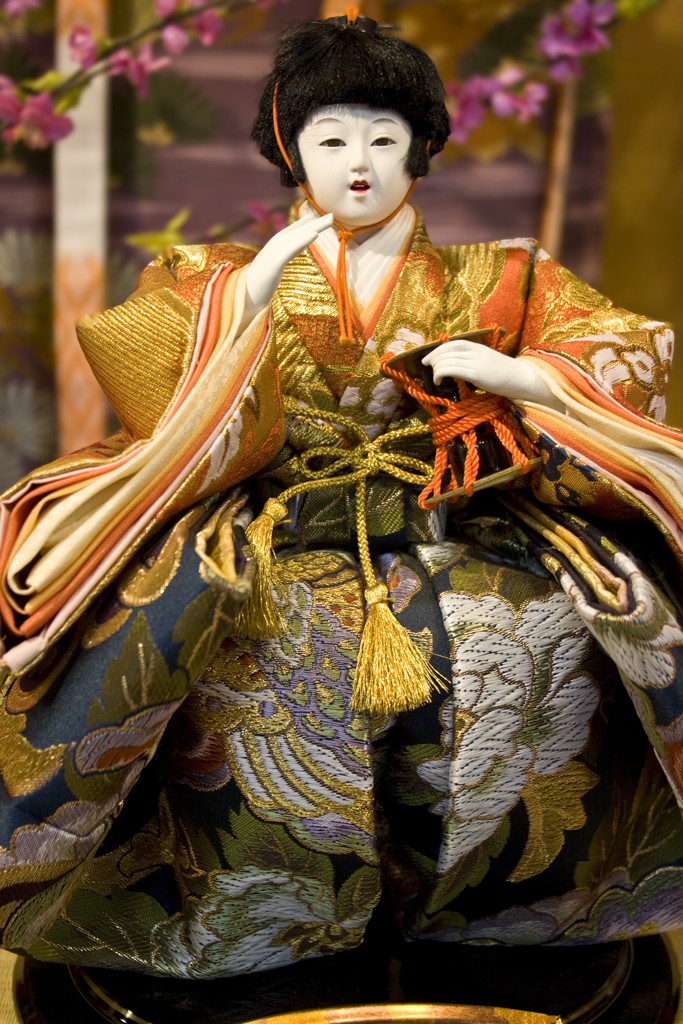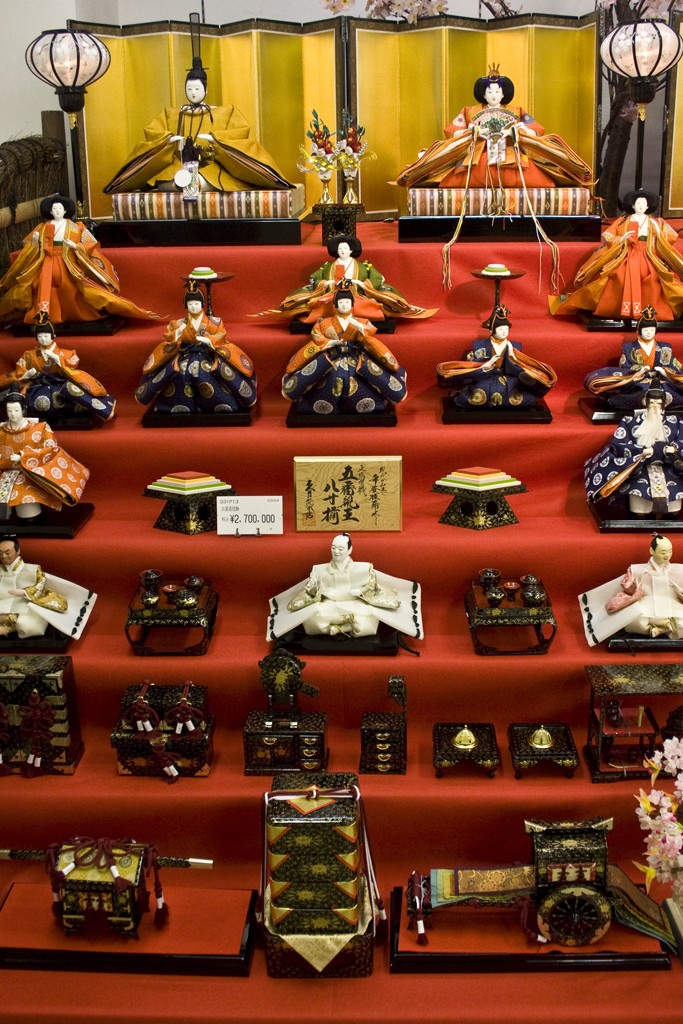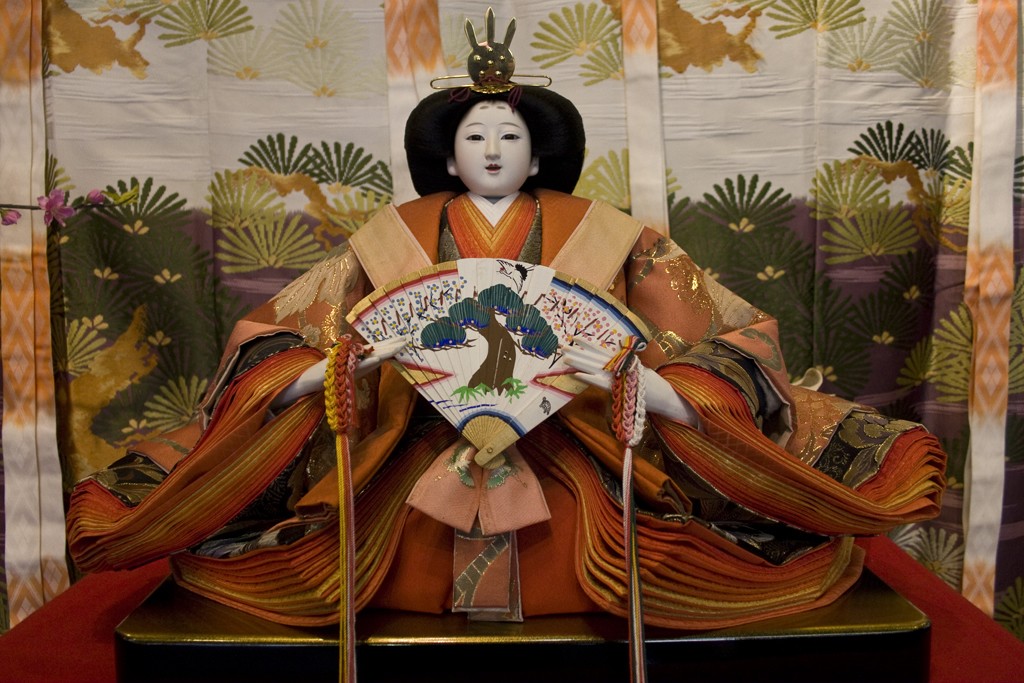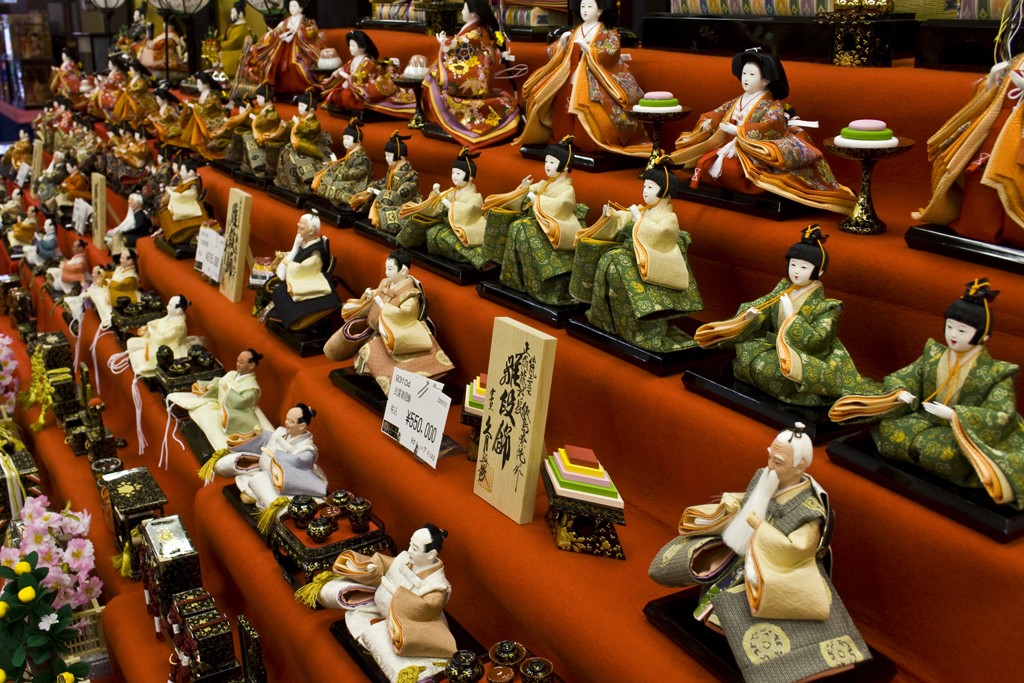Asakusabashi’s doll shops are one of those, not worth a special trip, but worth a visit if you’re in the area attractions. If you’re in Ryogoku or Akihabara and have a bit of extra energy, you might want to hop on the train for one stop or walk about 15 minutes to take them in.
These shops sell dolls for the Girl’s Day celebration of Hina Matsuri on March third, and Musha Ningyo for the Boy’s Day celebration on May 5.
Hina matsuri comes from a Chinese custom in which people believed that they were transferring their sins and misfortune to dolls, and then floated the dolls down rivers to get rid of them.
It came to Japan during the Heian period (794-1191), and was known as joushi no sekku to wish good health of the people.
The dolls were originally made of paper, but in the Edo period (1603-1867), people started making the dolls out of porcelain or other ceramics.The dolls are dressed as Heain courtiers.
This set of dolls was the most expensive in the shop and cost 2.7 million yen (about $US 25,000).
The kimonos of Heain period courtiers had as many as 16 layers!
Asakusabashi is on the JR Sobu Line or Asakusa subway line. The shops are near the East Exit of the JR station or exit A3 of the subway station. Just go out the exit and you’ll see them across the street.





